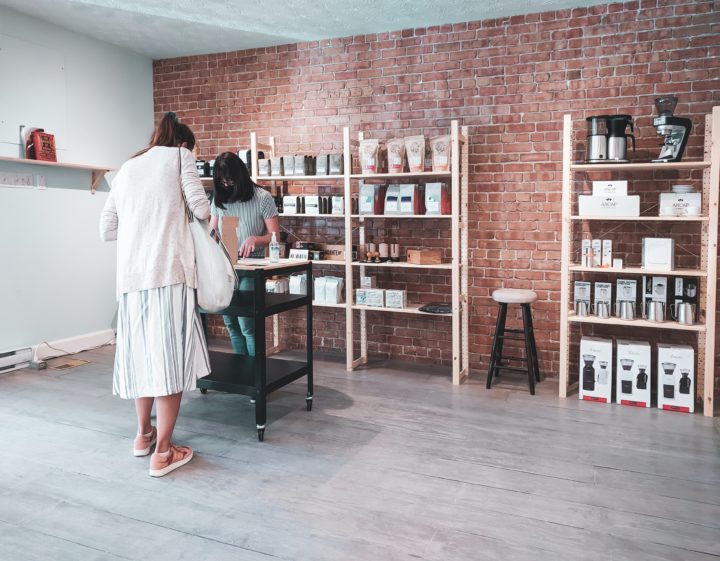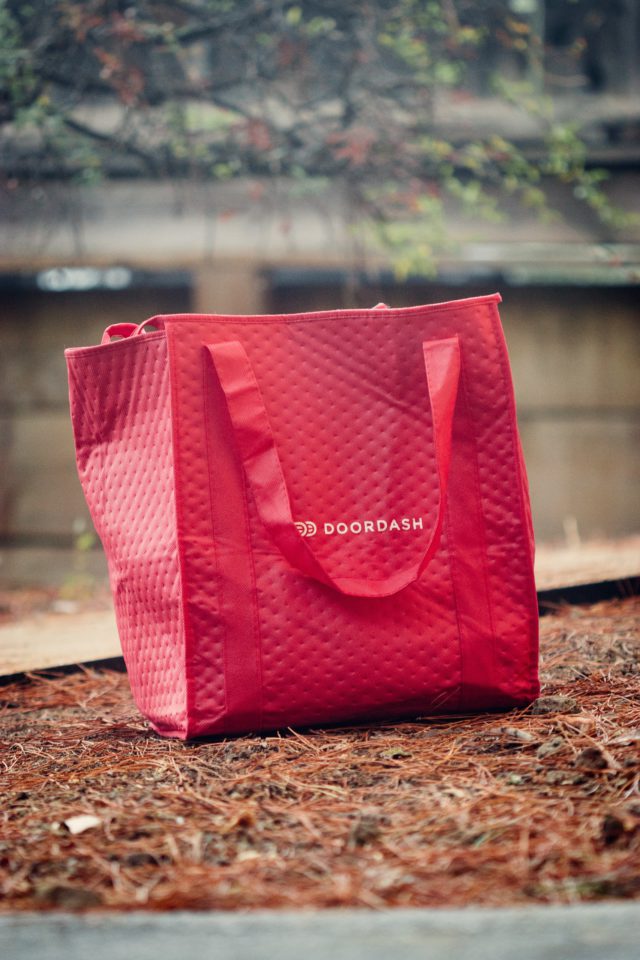Introduction
The coronavirus pandemic changed life as we know it, and caused several unprecedented slumps in the business world. The U.S. government is taking several measures to bolster the economy to prevent a complete meltdown. As businesses work towards recovery, it’s crucial to examine the statistics so far and determine where you stand in the industry.
This whitepaper analyses crucial metrics affecting small businesses in retail, food and beverages, warehousing, and hospitality. It also captures unemployment and policies that affect future business decisions.
Retail
The retail industry is a crucial part of the U.S. economy. It is a diverse industry that provides consumers with physical goods such as pharmaceuticals, automobile parts, food, clothing, book and music, health products, and house items. According to the Advance Monthly Retail Trade Report by the U.S. Census Bureau, the estimated sales for June 2020 were $524.3 billion, a 7.5% increase from May and 1.1% higher than the same period in 2019[i].
The report indicates that businesses began to re-open and recover from the slump in April and preceding months caused by the coronavirus pandemic. The unemployment rate in wholesale and retail trade, private wage and salary workers was around 11.2% in June – this is a drop from April’s 17.1% and May’s 15.1%[ii].
The National Retail Federation (NRF)[iii] has several resources under Operation Open Doors that are helping retailers re-open businesses, especially in terms of wearing facial coverings, employee screening, and business operating hours, mass gathering (limitations to 25 people), travel, and movement restrictions and COVID-19 related curfews.
The CARES Act[iv]also has several provisions that directly impact the retail industry. There are plans to provide small forgivable loans for small businesses under the $350 billion Paycheck Protection Program and the Main Street Lending Program. Other plans are the expansion of unemployment insurance to 39 weeks from 26 weeks, provision of $1,200 checks for adults, and tax relief for businesses.
Food and Beverage
The food and beverage industry in the United States grossed over 704.95 billion sales in 2019[v] and was set to keep growing. There are more than 1 million restaurants and more than 15 million people employed in the industry. Unfortunately, it’s estimated that restaurants could take a $225 billion hit, from the predicted 899 billion in sales[vi] in 2020.
As fears of coronavirus grew in March, consumers stocked up on non-perishable goods, especially oat milk, fresh meat alternatives, powdered milk products, dried meats, canned beans, rice, among others[vii]. It’s critical to note that while at-home consumption has increased due to stay-at-home measures, out-of-home consumption, which reels in the largest share of revenue, has decreased significantly.
Consumers have turned to deliveries and drive-through for restaurant meals. For instance, Instacart, a mobile delivery app, saw a 215% increase in downloads between mid-February and mid-March. Around the same time, Google Trends saw an increased search for “Can you freeze” specific food items as consumers prepared to cook and store meals[viii].
Unfortunately, unemployment rates have spiked in the industry. By mid-March, states authorized restaurants and dine-in eateries to lockdown. As of June 2020, unemployment stood at 24.1%, which decreased from 32.3% in May and 35.4% in April[ix].
Currently, restaurants and bars are re-opening across different states. Almost all states have re-opened restaurants, but with restrictions to prevent a surge in cases, while still maintaining economic growth[x]. Most bars remain closed. The CDC[xi] has encouraged most restaurants to limit themselves to takeaway orders. Seating arrangements for in-door dining should be 6-feet apart to reduce infections. All customers and employees are expected to wear face coverings and also sanitize.
Hospitality
The hospitality industry is one of the biggest losers in the coronavirus pandemic. Decreased tours and travels due to lockdowns and curfews, lowered incomes, and general fear has reduced activity in the industry[xii]. As of June 18, 2020, hotels have had an occupancy of 47.5 %, a 38.9% decrease from last year’s occupancy. The average daily rate has reduced by 28% to $98.56, while the revenue per room has dropped by 56% to $46.87[xiii].
The hospitality industry currently holds the highest unemployment rate at 28.9%- this is a decrease from 35.9% in May and 39.3% in April[xiv]. Businesses are beginning to re-open—more than 2.1 million people in the leisure and hospitality industry in the U.S. resumed work in June[xv]. This is a much-needed respite considering 87% of hotels laid off or furloughed workers at the beginning of the pandemic[xvi].
Consumers are beginning to look for domestic hotels to stay in, as hotels open with strict sanitation measures[xvii]. There are current travel restrictions, which means that international travel may be limited for several months[xviii]. However, many states are transitioning between closing and re-opening travel to ensure safety while improving economic activities[xix].
Warehousing and Storage
The warehousing and storage industry in the United States contributed around $75 billion to the national gross domestic product in 2019[xx]. Also, the industry employes more than 1.14 million people[xxi]. However, the coronavirus pandemic affected the activity in the industry.
First, the emergence of the virus in China cut off supply as manufacturers shut down to curb the spread. The supply disruption then caused a ripple effect on supply chains and warehousing and storage. Also, as international and interstate travel was shut down, movers and warehouses lost more business. The decreased demand from businesses that also shut down affected warehousing[xxii]. Evidently, the industry’s ties to other industries are the biggest disruptors of business.
However, not all businesses are affected. The demand for food and household goods spiked when the lockdown started. Operators brought on more employees to handle grocery distribution and e-commerce sales[xxiii]. Hopefully, as travel restrictions ease up, the industry will pick up.
Conclusion
As businesses re-open, finding digital solutions that enhance business efficiency and reduce the need for physical meetings is essential. For businesses in retail, food and beverages, hospitality and warehousing and storage, a solution that mobilizes the workforce and ensures quick communication, with easy shift scheduling, is excellent.
Zira provides full automation features for scheduling, messaging, team communication, performance metrics, and recruitment. It’s the perfect tool to enhance business operations during a pandemic.
Contact us today for a demo.
[i] https://www.census.gov/retail/marts/www/marts_current.pdf
[ii] https://fred.stlouisfed.org/series/LNU04032235
[iii] https://nrf.com/resources/operation-open-doors/coronavirus-retail-restrictions-by-state
[iv] https://nrf.com/resources/retail-safety-and-security-tools/coronavirus-resources-retailers/cares-act-resources
[v] https://www.statista.com/outlook/253/109/food-beverages/united-states#market-revenue
[vi] https://www.reuters.com/article/us-health-coronavirus-usa-eateries/for-u-s-small-restaurants-coronavirus-impact-is-swift-and-brutal-idUSKBN2161GC
[vii] https://www.statista.com/statistics/1104487/food-and-beverage-sales-growth-from-coronavirus-us/
[viii] https://www.eater.com/2020/3/24/21184301/restaurant-industry-data-impact-covid-19-coronavirus
[ix] https://www.bls.gov/iag/tgs/iag722.htm
[x] https://www.nytimes.com/interactive/2020/us/states-reopen-map-coronavirus.html
[xi] https://www.cdc.gov/coronavirus/2019-ncov/community/organizations/business-employers/bars-restaurants.html
[xii] https://www.businesswire.com/news/home/20200416005412/en/Impact-COVID-19-Hospitality-Industry-2020-Food-Beverages
[xiii] https://www.statista.com/statistics/1109880/coronavirus-hotel-sector-kpis/
[xiv] https://www.bls.gov/iag/tgs/iag70.htm
[xv] https://www.bls.gov/news.release/pdf/empsit.pdf
[xvi]https://www.northstarmeetingsgroup.com/RSS-Covid19/Coronavirus-Update-Hotel-Resort-Casinos-Closed-Economic-Impact
[xvii] https://www.afar.com/magazine/hotels-are-reopening-in-the-us-heres-what-you-need-to-know
[xviii] https://www.cdc.gov/coronavirus/2019-ncov/travelers/from-other-countries.html
[xix] https://www.kayak.com/travel-restrictions/united-states
[xx] https://www.statista.com/statistics/255541/value-added-of-the-us-warehousing-and-storage-industry/
[xxi] https://datausa.io/profile/naics/493/
[xxii] https://www.supplychainbrain.com/blogs/1-think-tank/post/31010-the-coronaviruss-impact-on-logistics-and-warehousing
Contact us today for a demo.
[i] https://www.census.gov/retail/marts/www/marts_current.pdf
[ii] https://fred.stlouisfed.org/series/LNU04032235
[iii] https://nrf.com/resources/operation-open-doors/coronavirus-retail-restrictions-by-state
[iv] https://nrf.com/resources/retail-safety-and-security-tools/coronavirus-resources-retailers/cares-act-resources
[v] https://www.statista.com/outlook/253/109/food-beverages/united-states#market-revenue
[vi] https://www.reuters.com/article/us-health-coronavirus-usa-eateries/for-u-s-small-restaurants-coronavirus-impact-is-swift-and-brutal-idUSKBN2161GC
[vii] https://www.statista.com/statistics/1104487/food-and-beverage-sales-growth-from-coronavirus-us/
[viii] https://www.eater.com/2020/3/24/21184301/restaurant-industry-data-impact-covid-19-coronavirus
[ix] https://www.bls.gov/iag/tgs/iag722.htm
[x] https://www.nytimes.com/interactive/2020/us/states-reopen-map-coronavirus.html
[xi] https://www.cdc.gov/coronavirus/2019-ncov/community/organizations/business-employers/bars-restaurants.html
[xii] https://www.businesswire.com/news/home/20200416005412/en/Impact-COVID-19-Hospitality-Industry-2020-Food-Beverages
[xiii] https://www.statista.com/statistics/1109880/coronavirus-hotel-sector-kpis/
[xiv] https://www.bls.gov/iag/tgs/iag70.htm
[xv] https://www.bls.gov/news.release/pdf/empsit.pdf
[xvi]https://www.northstarmeetingsgroup.com/RSS-Covid19/Coronavirus-Update-Hotel-Resort-Casinos-Closed-Economic-Impact
[xvii] https://www.afar.com/magazine/hotels-are-reopening-in-the-us-heres-what-you-need-to-know
[xviii] https://www.cdc.gov/coronavirus/2019-ncov/travelers/from-other-countries.html
[xix] https://www.kayak.com/travel-restrictions/united-states
[xx] https://www.statista.com/statistics/255541/value-added-of-the-us-warehousing-and-storage-industry/
[xxi] https://datausa.io/profile/naics/493/
[xxii] https://www.supplychainbrain.com/blogs/1-think-tank/post/31010-the-coronaviruss-impact-on-logistics-and-warehousing
[xxiii] https://www.wsj.com/articles/warehouse-hiring-surge-defies-crashing-u-s-jobs-market-11585939391




